This article was co-authored by Courtney Fose, RD, MS. Courtney Fose is a Registered Dietitian and Certified Nutrition Support Clinician at the University of Arkansas for Medical Sciences. She has worked as a Dietitian since 2009, and received her MS in Clinical Nutrition from the University of Arkansas in 2016.
There are 24 references cited in this article, which can be found at the bottom of the page.
This article has been viewed 23,279 times.
Calcium is an essential nutrient for the maintenance of strong bones and teeth. It is especially important for young people who are still growing and for people with osteoporosis or other bone conditions. You can add calcium to your smoothies by choosing recipes that incorporate a variety of calcium rich foods such as chia seeds, almond butter and kale. In addition, you can add calcium rich foods or liquids to your favorite smoothie recipes.[1]
Ingredients
Orange Sunrise Smoothie
- 2 handfuls baby kale (approximately 1 cup of kale)[2]
- 1 orange
- 11 ounces of coconut water
- 1 pitted nectarine
- 1 tablespoon of white chia seeds
- 1/2 cup of ice cubes
Funky Monkey Smoothie[3]
- 2 handfuls of baby spinach (approximately 1 cup of spinach)[4]
- 1 banana
- 1 tablespoon of cacao nibs
- 1 cup of ice
- 1 Persian cucumber
- 2 tablespoons of almond butter
- 1 cup of water
Beets and Greens Smoothie[5]
- One scrubbed, chopped beet
- One handful of collard greens (approximately one cup of collard greens)
- 1 tablespoon of chia seeds
- One Persian cucumber
- 1/2 lemon, squeezed
- 1 cup of coconut water
Calcium Fortifications
- Calcium fortified juice (e.g., orange or grapefruit juice)
- Almond milk
- Non-fat, calcium fortified milk
- Plain yogurt
- Chia seeds
- Almond butter
- Papaya
- Kale
- Spinach
Steps
Starting With Calcium Rich Recipes
-
1Figure out how much calcium you need. Taking your current age and gender into account, you should figure out how much calcium you need to consume per day. When you plan your meals, you should consider this recommended daily value. In general, the recommended daily value of calcium is 1,000 mg. This is the number that is used when companies list the percentage of recommended daily value for calcium is included in their products. This information should be included on the nutrition facts label of the product. However, the amount of calcium you consume should also be considered in relation to your age and gender:[6]
- If you are 1-3 years of age, you should consume 700 mg per day.
- If you are between 4 – 8 years of age, you should consume 1,000 mg per day.
- If you are between 9 – 18 years of age, you should consume 1,300 mg per day.
- If you are between 19 – 50 years of age, you should consume 1,000 mg per day.
- If you are over between 50 years of age, you should consume 1,200 mg per day.[7]
-
2Make an orange sunrise smoothie. Chop up your fruits and vegetables. Discard the excess seeds and skin in the compost or, if you don’t have one, put it in the garbage. Add the kale, orange, coconut water, pitted nectarine, chia seeds and half a cup of ice cubes to your blender. Blend for a minute or until the drink looks completely smooth and blended. Serve the smoothie, which contains approximately 35% of your daily calcium requirements and works great for breakfast.[8]
- It contains one cup of raw kale, which contains 9% of your daily calcium requirements.[9]
- It also has chia seeds, which accounts for 10% of your calcium requirements, and one orange, which accounts for another 5%[10]
- It has a nectarine containing approximately 9mg of calcium and 11 ounces of coconut water, which add up to another 11% of daily calcium requirements.[11]
Advertisement -
3Mix a funky monkey. Chop all of your fruits and vegetables. Add the spinach, banana, cacao nibs, ice, Persian cucumber, almond butter and water to your blender. Mix and serve this funky monkey smoothie, which contains approximately 17% of your daily calcium requirements.
- The almond butter will give you 8% of your daily calcium requirements.[12]
- The cup of spinach will give you about 4% of your daily calcium requirements.[13]
- The cucumber will give you about 3% of your calcium requirements.[14]
- The banana will give you about 1% of your calcium requirements.[15]
- The cacao nibs will give you another 1% of your calcium requirements.[16]
-
4Enjoy a beets and greens smoothie. Scrub and then chop up your beet. Peel and chop your cucumber and your lemon. Clean and then chop up the collard greens. Add a scrubbed and chopped beet, a handful of collard greens, one tablespoon of chia seeds, a Persian cucumber, half a lemon and a cup of coconut water to a blend. Mix and serve this delicious beets and greens smoothie, which contains approximately 22.5% of your daily calcium requirements.[17]
- The cup of collard greens will give you 5% of your daily calcium requirements.[18]
- The beet should give you at least 1% of your daily calcium requirements.[19]
- The chia seeds account for 10% of your calcium requirements.[20]
- The cucumber will give you about 3% of your calcium requirements.[21]
- The half lemon will give you another 3.5% of your calcium requirements.[22]
Adding Additional Calcium
-
1Use kale in your smoothie. Consider adding a cup or two of kale to your favorite smoothie. You might want to try adding kale to a pineapple, strawberry or other sweet, fruity smoothie. If you are unfamiliar with the taste of kale, you should try eating it raw in a salad first. Gradually increase the amount of kale you put in your smoothie until you have a good balance of taste and calcium intake.
- Two cups of chopped, raw kale contains 18% of your daily value of calcium.[23]
-
2Add spinach to your smoothie. Add some spinach to your favorite smoothie. Although not quite as loaded with calcium as kale, spinach has considerable calcium content. Consider adding spinach to a fruit smoothie with oranges, pineapples, or apples.
- Two cups of spinach contains 8% of your daily value of calcium.[24]
-
3Throw some chia seeds in your smoothie. Chia seeds are packed with healthy fats, protein, carbohydrates and calcium. They have a nutty taste. If you add a couple tablespoons to your smoothie, you won’t alter the flavor profile too much.[25]
- An ounce of chia seeds has about 18% of your daily value of calcium.[26]
-
4Put whole almonds or almond butter in your smoothie. Almonds contain lots of protein, healthy fats, fiber and plenty of vitamins including calcium. They are found in a number of healthy snacks, such as almond butter, and can be added to smoothies. You can either use whole almonds or almond butter.[27]
- If you want an added dose of calcium and protein in your morning smoothie, add almond butter.
- One tablespoon of almond butter contains about 4% of your daily calcium requirements.[28]
-
5
Fortifying Your Smoothie with Calcium
-
1Use fortified juice in your smoothie. If you want to stick to your existing smoothie recipes but increase the calcium content, you could try adding a fortified calcium drink as the smoothie base. Consider adding half a cup of orange or grapefruit juice that has been fortified with calcium. Depending on the brand, you should get an additional 17% of your daily calcium value.[31]
- You could use a fortified juice instead of water in the funky monkey smoothie. This would increase the calcium content in this smoothie, which would then give you approximately 34% of your daily calcium requirement.
-
2Use almond milk as your smoothie base. Consider using half a cup of almond milk as the base of your smoothie. Instead of water or juice, use almond milk to fortify the calcium content of your smoothie.
- 240 grams of almond milk contains about 45% of your daily recommended value for calcium.[32] .
- If you do not like the taste of coconut water, you could use almond milk in the beets and greens or the orange sunrise smoothie.
-
3Use calcium fortified milk as your smoothie base. Milk is very rich in calcium and you can find calcium fortified milk which contains additional calcium. You should consider adding half a cup of milk as a base to your smoothie. It will give you calcium as well as protein, carbohydrates, vitamin A and C.[33]
- A cup of calcium fortified, non-fat milk contains 50% of your daily recommended value of calcium.
- If you used calcium fortified milk in place of water in the funky monkey smoothie, you would be getting 67% of your daily calcium value.
- If you are lactose intolerant, consider using almond milk or juice instead.
-
4Add yogurt to your smoothie. Yogurt tastes delicious in fruit smoothies. Consider adding half a cup to your favorite smoothie. It will make your smoothie a little thicker, so you may need to add a couple tablespoons of water to get the right consistency, depending on the other ingredients in your smoothie.
- A cup of plain yogurt contains about 30% of your daily recommended value of calcium.[34]
Things You’ll Need
- Blender.
- Cutting board.
- Knives.
- Ice cube tray.
References
- ↑ http://www.incrediblesmoothies.com/green-smoothies/how-to-get-more-calcium-in-your-green-smoothies/
- ↑ https://cafejohnsonia.com/2013/11/kale-sunrise-green-smoothie.html
- ↑ https://www.kakosichocolates.com/recipe/banana-spinach-and-cacao-nib-smoothie/
- ↑ https://davyandtracy.com/green-smoothies/how-to-get-more-calcium-in-your-green-smoothies/
- ↑ https://www.eatingbyelaine.com/beets-greens-detox-smoothie/
- ↑ https://medlineplus.gov/magazine/issues/winter11/articles/winter11pg12.html
- ↑ https://www.davita.com/kidney-disease/diet-and-nutrition/diet-basics/calcium-and-chronic-kidney-disease/e/5300
- ↑ https://davyandtracy.com/green-smoothies/how-to-get-more-calcium-in-your-green-smoothies/
- ↑ http://www.incrediblesmoothies.com/green-smoothies/how-to-get-more-calcium-in-your-green-smoothies/
- ↑ http://www.incrediblesmoothies.com/green-smoothies/how-to-get-more-calcium-in-your-green-smoothies/
- ↑ https://greenblender.com/smoothies/recipes/orange-sunrise
- ↑ http://nutritiondata.self.com/facts/nut-and-seed-products/3153/2
- ↑ http://www.incrediblesmoothies.com/green-smoothies/how-to-get-more-calcium-in-your-green-smoothies/
- ↑ http://nutritiondata.self.com/facts/vegetables-and-vegetable-products/2440/2
- ↑ http://nutritiondata.self.com/facts/fruits-and-fruit-juices/1846/2
- ↑ http://nutritiondata.self.com/facts/custom/2277624/0
- ↑ https://www.myfooddata.com/articles/high-calcium-vegetables.php
- ↑ http://nutritiondata.self.com/facts/vegetables-and-vegetable-products/2410/2
- ↑ http://nutritiondata.self.com/facts/vegetables-and-vegetable-products/2348/2
- ↑ http://nutritiondata.self.com/facts/nut-and-seed-products/3061/2
- ↑ http://nutritiondata.self.com/facts/vegetables-and-vegetable-products/2440/2
- ↑ http://nutritiondata.self.com/facts/fruits-and-fruit-juices/1937/2
- ↑ http://www.incrediblesmoothies.com/green-smoothies/how-to-get-more-calcium-in-your-green-smoothies/
- ↑ http://www.incrediblesmoothies.com/green-smoothies/how-to-get-more-calcium-in-your-green-smoothies/
- ↑ http://www.incrediblesmoothies.com/green-smoothies/use-chia-seeds-in-green-smoothies/
- ↑ http://www.incrediblesmoothies.com/green-smoothies/use-chia-seeds-in-green-smoothies/
- ↑ https://www.mouthhealthy.org/en/nutrition/food-tips/8-non-dairy-calcium-rich-foods-for-your-teeth
- ↑ https://nutritiondata.self.com/facts/nut-and-seed-products/3153/2
- ↑ https://nutritiondata.self.com/facts/fruits-and-fruit-juices/1985/2
- ↑ http://www.incrediblesmoothies.com/green-smoothies/how-to-get-more-calcium-in-your-green-smoothies/
- ↑ http://www.incrediblesmoothies.com/green-smoothies/how-to-get-more-calcium-in-your-green-smoothies/
- ↑ http://nutritiondata.self.com/facts/custom/1981172/2
- ↑ http://nutritiondata.self.com/facts/dairy-and-egg-products/7578/2
- ↑ http://nutritiondata.self.com/facts/dairy-and-egg-products/104/2




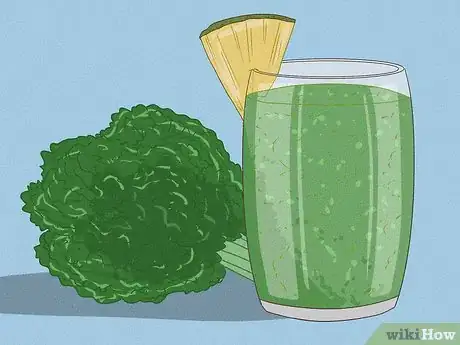
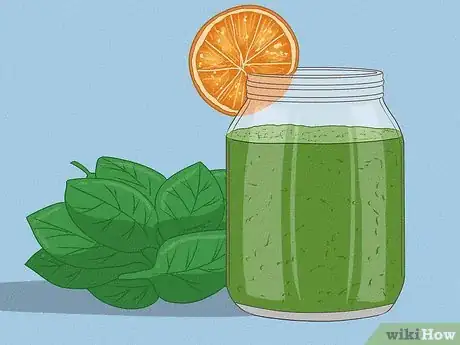


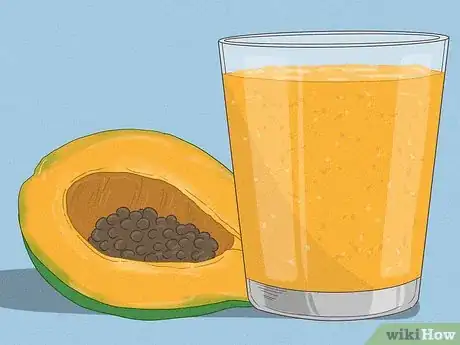
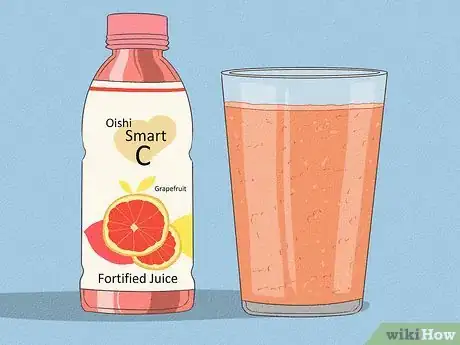
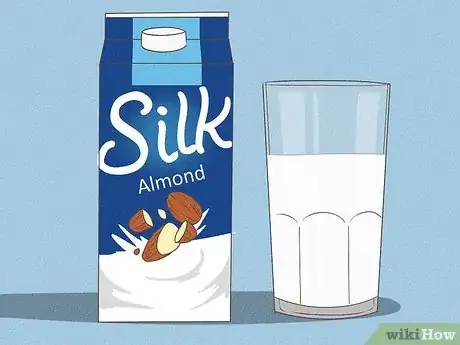
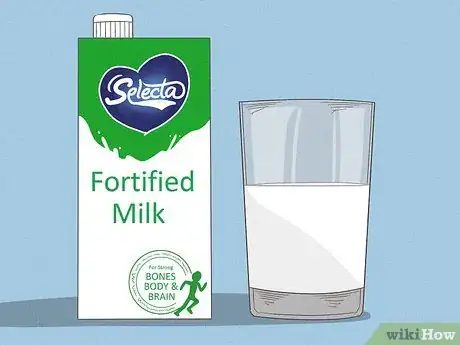
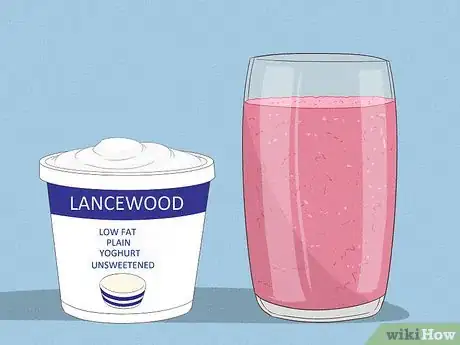














































Medical Disclaimer
The content of this article is not intended to be a substitute for professional medical advice, examination, diagnosis, or treatment. You should always contact your doctor or other qualified healthcare professional before starting, changing, or stopping any kind of health treatment.
Read More...